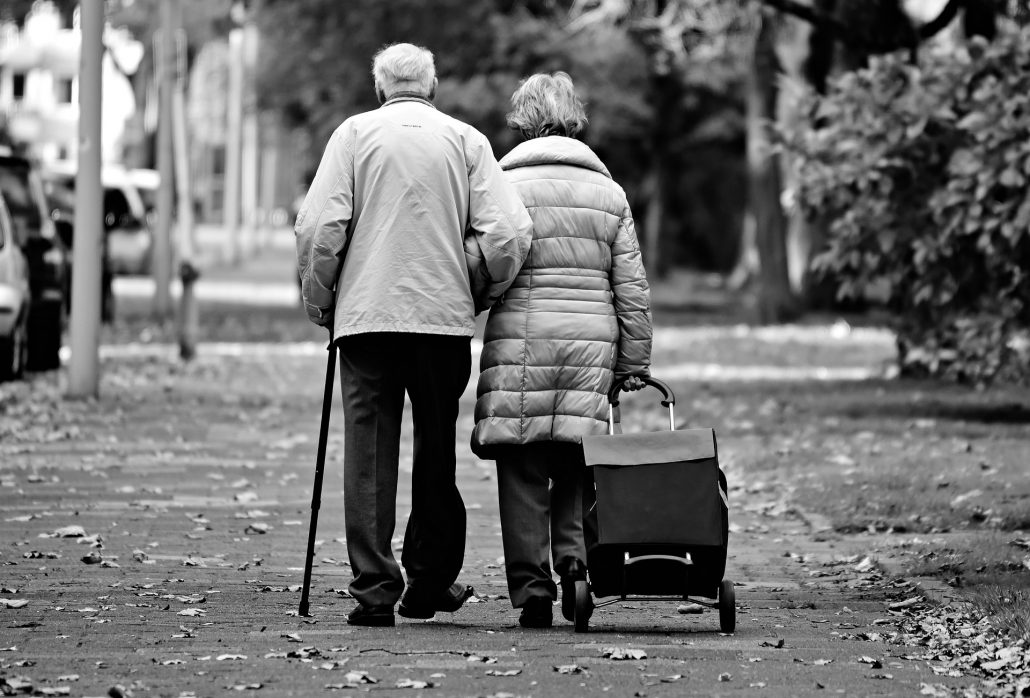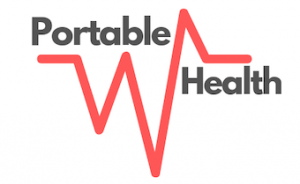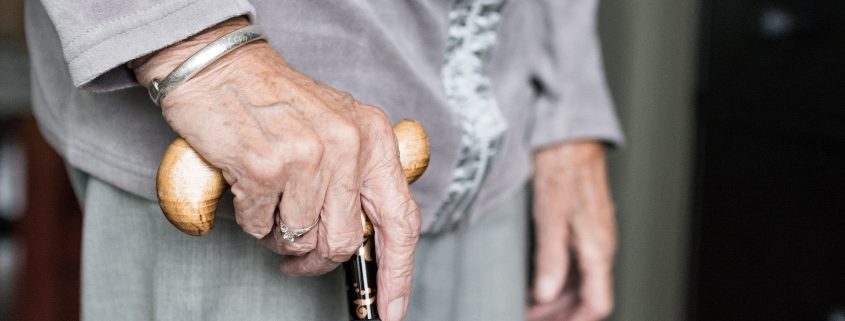The common term for a cerebrovascular accident (CVA), stroke refers to an event where blood flow to the brain is interrupted as a result of the arteries either being blocked and forming a blood clot on the brain, or bursting resulting in a bleed. When the brain cells don’t receive a blood supply with vital oxygen, glucose and nutrients, they become damaged and die. Blood supply is occasionally returned within the following minutes or sometimes hours after a stroke meaning some of the brain cells can survive. The area of the brain where damaged occurs will dictate the symptoms experienced by the patient.
Stroke is the third most common cause of death in western populations (after heart disease and cancer), and the most common cause of acquired severe disability. While the good news is that if caught early, most patients can survive a stroke, often they are left with residual weakness and disability, limiting function significantly. For this reason, stroke is one of the biggest burdens on our health system and the families of patients. Rehabilitation for stroke patients should be an ongoing project, not something that is focused on for the initial six weeks, post event. While the stroke recovery pathway should begin as close to infarct as possible, there is strong, ever-growing evidence that suggests patients will benefit from rehabilitation and continued physical activity years after the initial event has occurred.
Medical Management
All stroke patients must be admitted to hospital for thorough investigations and assessment, as management is determined by the type of infarct and its location. Research has shown that patients have better survival rates if admitted to a specialised stroke unit instead of a general medical ward and this is thought to be due to specialised nursing care and early therapy intervention. Good nursing care is one of the most important factors in early stroke intervention; making sure a patient is fed, hydrated, ensuring skin integrity is maintained and no pressure sores occur. These may seem simple measures, but can have a large impact on long term outcomes.
Objectives of Stroke Rehabilitation
Rehabilitation can commence as soon as neurological symptoms stabilise and studies show an immediate start is linked with much better outcomes for patient function. The primary goal of rehabilitation is to prevent any secondary deficits, e.g., compensatory movement patterns or habits forming, before trying to improve use and function. Stroke usually presents in a contralateral manner, i.e., damage to the left side of the brain affects the right side of body and vice-versa. Importantly, no two stroke patients are the same even if their infarct is in an identical part of the brain.
Therapy helps the brain re-learn skills or if this is not possible, find ways to adapt and learn new methods. The term “neuroplasticity” refers to the creation of new pathways within the brain and reminds us that it’s never too late to try to regain function in a limb. While the most important period of rehabilitation is the first six months, improvements can continue for years after the initial stroke, which is why it is imperative to continue rehabilitation long term. The danger for patients who do not continue with therapy is they accept their impairments and develop bad habits and compensatory patterns, risking causing musculo-skeletal problems and pain.
Inpatient Rehabilitation
This is the principle that most people think of when “stroke rehab” is mentioned. An intensive program which takes place in a hospital or other comparable stroke unit, usually consisting of at least three hours of therapy per day. Patients have access to Physiotherapy, Occupational Therapy, Speech & Language Therapy and Dietetics, they are assessed thoroughly and a treatment plan is established encompassing goal setting and provision of adaptive equipment, such as mobility aids or devices used to assist with activities of daily living.
The physical deficits usually encountered are any of the following:
- Mobility and transfers, walking, seating
- Upper limb weakness, fine motor skills
- Sensation
- Neglect and inattention, vision and perception
- Swallowing and speech
- Aphasia, receptive and expressive
- Cognitive impairment and decision making
- Continence
- Pain
- Behaviour and personality
- Fatigue
Therapists need to anticipate and prevent muscle contractures and joint subluxations and commence cardiovascular training in an appropriate way to prevent deconditioning. Even a hemiplegic limb can start retraining by adapting different techniques to elicit muscle contraction. An example of this is by eliminating gravity, making it easier for the muscles to contract and move the joint in question.
A common complaint from patients is shoulder pain in their affected side due to a flaccid arm and a shoulder that hangs from the joint due to inadequate stability from the shoulder muscles. This can be further aggravated by poor handling during transfers by hospital staff.
Progressive muscle wasting and shortening from positioning and joint immobility can cause significant poor movement patterning in the shoulder as the patient attempts to move their arm as best they can and recruits other bigger, stronger muscles to help which then become overactive. This usually results in neck, shoulder and upper back pain.
There are well documented benefits of trying to implement some normality in rehab e.g. getting dressed in the patient’s own clothes, wearing proper footwear, working to a schedule and having meals in a dining area or at least in an arm chair instead of in bed.
Social services are also involved to assist with implementing care packages or transition care in anticipation for discharge home.
Discharge relies on the patient not requiring any further invasive nursing care e.g. IVs, injections or tube feeding. In some cases, where continued use is required this can be done at home by home nurses or family members who have undergone training by nursing staff.
There is a tendency for hospitals to encourage early supported discharge home with community rehabilitation, which has been shown to be just as effective as conventional rehab in an inpatient facility. The longer patients stay in hospital the higher their risk of developing a chest infection or other hospital acquired illnesses.

Exercise is absolutely critical to stroke recovery: both general exercises, such as walking, and specific rehabilitation exercises, as guided by a physiotherapist
Outpatient Rehabilitation
Patients are usually discharged home once it has been deemed safe for them and they require no further inpatient medical or nursing interventions. If rehabilitation ceases on discharge they potentially miss out on learning high level skills and can quickly develop poor compensatory habits. It is vital that patients don’t go home to be inactive and lose any gains made during inpatient rehab. When they go home they are without a therapist to give them feedback and due to their decreased proprioception, they often have poor insight into the quality of their movement. Stairs are often used as a discharge assessment; however, there are many other functional tasks that are equally important e.g. progressing to walking without a mobility aid, fine motor skills and higher level balance training.
Ideally patients should continue with outpatient rehabilitation by attending a day therapy rehabilitation unit. They have the added benefit of living at home where they can practise functional tasks in their own environment. Outpatient rehabilitation usually consists of two to three hours of therapy, once or twice per week or there are specific Day Therapy units which run intensive programs of five to six hours of rehab, two or three days per week. This can be a very useful conduit between inpatient rehabilitation and home. Patients also often benefit from the social interaction and support of other patients who can be struggling with similar frustrations and long days of therapy can also help to build up stamina and improve physical endurance. Outpatient rehabilitation units may have access to recreational therapy, art and music therapies which may be of benefit to patients and they can also liaise with exercise physiologists or community personal trainers to help continue the patient’s training and physical recovery.
While inpatient rehabilitation is often aimed at making a patient as safe as possible to discharge them home, outpatient therapy can take more time to work on the quality of movement and fine tune any imbalances or asymmetries. Therapy techniques that can be used at any point during the recovery pathway include:
1) Gait training on Treadmill
A treadmill is a very helpful tool for stroke patients when wanting to retrain their gait pattern. With the use of a harness, patients can walk carrying less weight through their legs and they can also modify the speed to use a small amount of momentum. Treadmill training allows the full walking cycle to be practised without the fear of falling and is a great training modality to help improve cardiovascular fitness.
Hydrotherapy has a similar training effect by reducing weight bearing. The water can be used as resistance for strengthening and it becomes very easy to train the cardiovascular system.
2) Constraint-Induced Movement Therapy (CIMT)
When a weak or painful limb (usually an arm), is favoured, the other limb is used more frequently, resulting in further disuse atrophy of the affected limb. By immobilising the unaffected arm, the patient is forced to use the weaker arm. Positive outcomes have been seen with CIMT with improved strength and functioning of the affected arm. Numerous research studies show good results using CIMT, all patients had suffered their strokes at least one year prior to the studies commencing, confirming that progress can still be made long term.
3) Functional Electrical Stimulation
This treatment process sees electrodes placed on the skin overlying target muscle groups and can be used on most body parts. The muscles are activated by electrical stimulation of the motor neurons which results in muscle contraction and movement at the joint. By stimulating the muscles the motor pathways to and from the brain are used, reminding the brain how to move the joint and training the muscles in the process.
Another benefit of outpatient therapy is that patients have noted the stress and anxiety that comes with the initial brain injury and hospital admission prevents them from participating to their full potential in inpatient rehab and they are more receptive once home and in a better routine allowing better progress.
In-Home Rehabilitation
Some patients have difficulty accessing outpatient therapy due to various reasons such as an inability to navigate stairs or transport limitations as obviously, there are driving restrictions post stroke. In these cases, having a therapist visit the patient at home may be the preferred option, ensuring that they are still able to access important rehabilitation. Another benefit of home rehab is that patients are in their own environment and then able to continue practising on their own in between sessions with a consistent set up.
Developments in telerehabilitation have resulted in patients being able to attend rehab appointments at home without having to worry about managing stairs, driving or relying on public transport/taxis. The therapist doesn’t need to leave their clinic and can deliver the therapy session via a laptop or tablet device and webcam.
Unfortunately, some patients require placement in a care facility if they are not safe to return home however, some residential aged care facilities have their own physiotherapist on site or at least have access to one who can visit. Rehabilitation in this scenario may place emphasis on maintenance and prevention of further impairment.

Effective rehabilitation guided by a physiotherapist can help patients get back to doing what they love
Equipment and Modifications
Assistive aids are beneficial in helping with activities of daily living but should not be given as alternative to rehab. The danger is that if patients have an assistive device then they no longer have to perform the task in question and may stop practising. It is recommended that patients use assistive aids and modifications as required however keep attempting tasks and continuing with their exercise program.
Physical Activity Recommendations
While everybody should have some amount of physical activity in their day it is especially true of stroke patients. Patients with physical impairments are less likely to exercise which further decreases their strength and fitness. This results in a vicious cycle making a more sedentary lifestyle more likely. Exercise can help reduce impairments, which improves function and quality of life.
The general guidelines for physical activity for stroke patients are as follows:
- 150 minutes of moderate intensity exercise per week.
This can be broken down into manageable loads e.g. three portions of 10 minutes per day.
Research has shown that exercise is safe post stroke and it is recommended that patients take part in a cardiac rehabilitation style program which focuses on walking based training in combination with light resistance exercise. While definitive, high quality research trials, studying the effects of exercise on stroke prevention are lacking, smaller observational studies have provided evidence that physical activity has a positive effect on numerous stroke risk factors such as high blood pressure, high cholesterol, diabetes, sedentary lifestyle as well as alcohol consumption and tobacco use. Patients should continue to exercise to prevent further strokes. Exercise is also important in the elderly population; some patients may have been deconditioned prior to having their stroke. The seventh decade of life is the critical point for accelerating physical decline. The stroke may be the wake-up call some patients needed, the catalyst to them turning over a new leaf to become more active and make healthier lifestyle choices, such as giving up smoking. In any population group, the psychological benefits of physical activity are undeniable. When exercising, the brain releases endorphins and serotonin, hormones which help improve mood and sleep.
An individual’s ability to exercise will depend on the location and severity of their stroke as well as any residual impairments. Cardiovascular training is recommended for the prevention of further cerebrovascular events while resistance training benefits muscle strength, gait retraining and balance. To gain the cardiovascular benefits and stroke risk reduction associated with exercising, patients must maintain participation in regular physical activity. Traditional rehab programs most probably don’t reach target heart zones for long enough periods of time to elicit cardiovascular fitness improvements. It was previously thought that stroke patients should avoid strength training to avoid the risk of developing spasticity in their affected limbs. Although these claims have never been substantiated, it’s recommended that patients seek advice on the best exercises for strength training.
The results of a study researching the benefits of stationary cycling for patients once discharged from hospital, showed improved self-esteem and physical fitness. One patient started gardening, another could comb her hair. These tasks are unrelated to cycling however it is thought that the exercise gave motivation to continue other aspects of their rehabilitation.
It is never too late for a stroke patient to reap the benefits of outpatient rehabilitation and exercise. Those with private health insurance or Department of Veteran’s Affairs concession should investigate if they are eligible for rebates to see a physiotherapist or a similar health professional. The advantages are not isolated to stroke prevention and improved function but extend to general health and quality of life as well.



